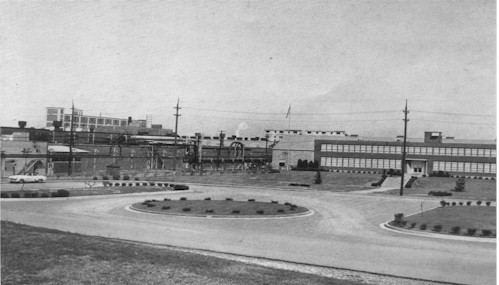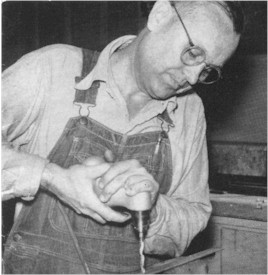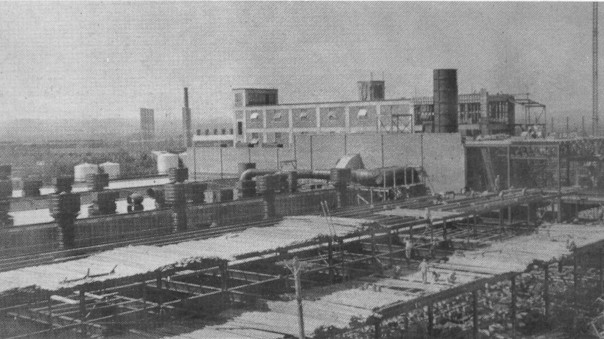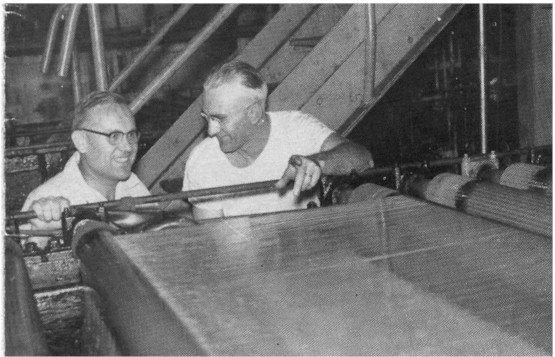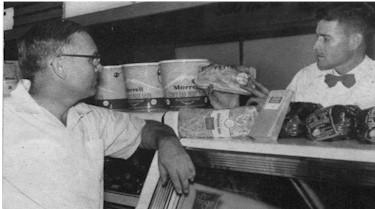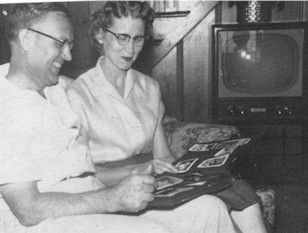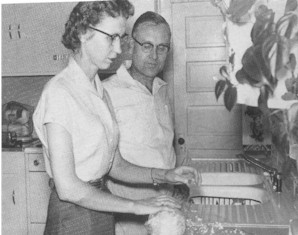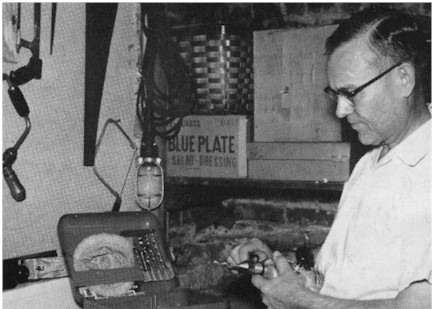|
|||||||||||||
|
In
the original and subsequent purchase of property 1148 dwellings were
included. Just recently 220 additional houses have been finished,
making a total of 1368. These are for the employees of the
Cellophane Company. - Engineer Study 1929 |
|||||||||||||
| Cellophane Celebrates
25th Anniversary
taken from 25th anniversary booklet |
|||||||||||||
|
|
|||||||||||||
|
The
Cellophane Plant as it appeared in 1954.
|
|||||||||||||
|
On the occasion of our 25th Anniversary, employees of Old Hickory Cellophane can take just pride in the plants many accomplishments during the past quarter century. To be sure, it hasn't been easy. But when we look back over the years to our inexperienced beginning, we can arrive at only one answer - progress. The Story of Cellophane, itself, is indeed an exciting and thrilling one - typical of the American Free Enterprise System, without which this wonder product could not have obtained its prominence in our every day lives. What makes cellophane's story even more exciting and thrilling is the fact that we here have had a large part in its development as a practical and useful item know the world over.
The Story of Cellophane, itself, is indeed an exciting and thrilling one - typical of the American Free Enterprise System, without which this wonder product could not have obtained its prominence in our every day lives. What makes cellophane's story even more exciting and thrilling is the fact that we here have had a large part in its development as a practical and useful item know the world over. Let us go back a few years, to the beginning of our plant.
Old Hickory Cellophane had its first fling at making this sparkling film back in the year 1929, just five years following the first production in Buffalo, New York. As we recall, the Philadelphia Athletics won the World Series that year; Al Jolson was a popular singer; Du Pont introduced the famous "Dulux" enamels, and folks were singing "Caroline Moon". James M. Staggs was on hand for the first cast-off in Plant One, and has helped write the history of our plant throughout its existence. Start-Up Was Sight To See Jim remembers well the inexperienced crew that started up the plant. As a member of that crew, he was assigned the job of dumping the first pot of sulphuric acid into the coagulating bath make-up, used in the first cast-off. As a matter of fact, Jim dumped exactly 33 pots of acid that shift only to find that the bath was not strong enough to make a cast-off. By the time he returned to work the next day the bath had been bucked up to a point where it could be used. After repeated attempts and a shift filled with trial and error, and even a few nightmares, the first piece of cellophane rolled off No.1 Casting Machine at 7:30 a.m. on September 30, 1929. "The boys must have been anxious", Jim remembers, "because the roof over the casting room had not been completed and the machines were covered with tarpaulins."
Some of the plant personnel back in '29 included A.T. Twing, Plant Superintendent; C.G. Fuss, Chief Supervisor; F.W. Anderson, Chemical and Casting Area Supervisor; The Casting Shift Supervisors were Dan Smithwick, Joe Hemphill and Bill Winslow, Steve Houghton, Bill Dunwoody and Charlie Perry were the Casting Foremen. The Chemical Building Foremen were Eldon Watson, Graham Ryan and J. Petty.
Plant Grows Fast Plant expansion soon followed the initial start-up of Plant One, and despite the depression, Plant Two got underway in August 1930. Intensive research, continued improvements, more efficient production and lower prices, had followed the building of the original cellophane plant in Buffalo. In the meantime, Dr. W. Hale Charch had invented moisture-proof cellophane. All of these things opened up new fields and made cellophane available for more diversified uses. They created more jobs and better job security here and throughout the cellophane industry. Our plant has really never known completion since operations first began, and further, to meet continued present day demands for our product, work has started on the new expansion program announced recently by Norm Copeland, Plant Manager. "Besides modernization of equipment, the program includes application of the latest technology in cellophane manufacturing which will lead to higher operating efficiency," Dr. Copeland said. "In addition, improvements in process control are expected to bring corresponding improvements in quality."
Today, at its four Cellophane plants, Du Pont has, all told, about 6000 cellophane customers, of which less than a hundred are big companies like the national bakers, cigarette manufacturers and leading meat packers. The rest are largely small businesses. Much of the present consumption of cellophane was developed by little firms who devised new uses and new techniques of use. Only about 55 percent of Du Pont's Cellophane film is used in the form in which it is shipped. The other 45 percent is used for conversion, such as printing, bag making, etc., made into articles such as tape and ribbons; or used for various non-packaging purposes. There are approximately 400 firms in this field, many of which have built up prosperous businesses of their own, based on cellophane. Some have grown from an idea and a few dollars into companies, of national reputation. In many respects our growth parallels the growth of those companies which sprang up as a result of cellophane. For example, at the end of 1930, our first full year of operations, we had 577 employees. The annual payroll was approximately $600,000. Today, there are 1250 employees with an annual payroll of over $5 million.
|
|||||||||||||
|
The average earnings of employees here have increased many times since 1929, and despite increased cost of living, real income has increased substantially. This has resulted in a much higher standard of living and has gained for us a very favorable position within the industry. Today, Jim Staggs knows that our cellophane is competing with many other types of wrapping material, ranging from waxed paper to metal foils and rubber products, and with cellophane made by other companies. Jim knows also that to stay in business we must continue to compete with every other kind of wrapping material on the market. To do this will require the wholehearted cooperation of every employee on the plant. With the same kind of enthusiasm and active interest manifest during the past 25 years, the next 25 should prove even more exciting and thrilling. |
|||||||||||||


